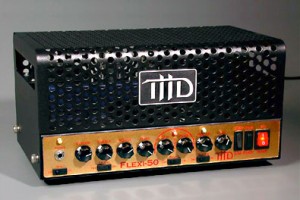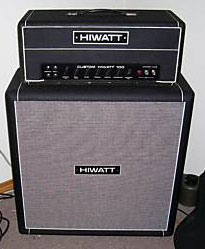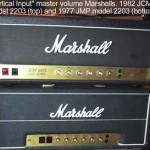"Wait a minute, this amp isn’t a clone of a plexi Marshall?!"
 That was my initial thought when plugging into this amp for the very first time. And that’s actually a good thing for many users who will enjoy the added flexibility of the many tonal options presented by THD Electronic’s new Flexi 50 amplifier. Though my initial idea really was to pit a ’68 50 watt Marshall against the THD Flexi-50 amplifier head, it was clear from both looking at and listening to the Flexi-50 that this would have been an apples to oranges type of comparison. The Flexi-50 offers quite a bit of tonal and feature-set variety and it would be inappropriate to simply compare it to one single amplifier.
That was my initial thought when plugging into this amp for the very first time. And that’s actually a good thing for many users who will enjoy the added flexibility of the many tonal options presented by THD Electronic’s new Flexi 50 amplifier. Though my initial idea really was to pit a ’68 50 watt Marshall against the THD Flexi-50 amplifier head, it was clear from both looking at and listening to the Flexi-50 that this would have been an apples to oranges type of comparison. The Flexi-50 offers quite a bit of tonal and feature-set variety and it would be inappropriate to simply compare it to one single amplifier.
Perhaps I subconsciously took the name "Flexi" and associated it mostly with a 1960’s plexi-era Marshall. In any case, Andy Marshall, THD’s President explained it best: "It’s named the Flexi-50 because of its flexibility in being able to capture vintage British and American tones."
Read More »

